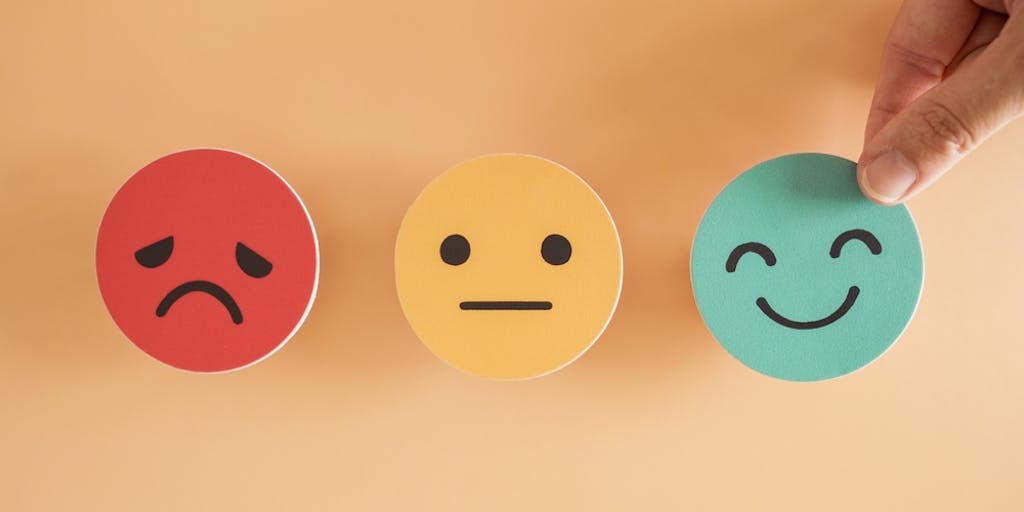
What I Learned After Building a Tech Tool to Support Student Well-Being
This story was published by a Voices of Change fellow. Learn more about the fellowship here.
One morning, my computer science students opened their laptops for our daily mental health check-in. One of my seventh graders, usually the first to speak, sat quietly. As she submitted her daily check-in, she chose the tired emoji and typed, “Stayed up all night at the hospital with my mom.” I planned a different lesson for that day, but after reading that sentence in her check-in, I adjusted her task so she could move at her own pace. After class, I met with her in private to offer additional support, and with her permission, we told her teachers that she might need flexibility that day.
In the meantime, I also sent a private note to the Student Emergency Support Team through our online teacher check-in tool. During the school day, our Student Emergency Support Team responds on-site to mental health concerns. If needed, a team member comes to the room, helps the student step into a calm space and coordinates care with the counselor and family. The team records a brief status in our secure system and sends a follow-up plan to the teacher. The Student Emergency Support Team comprises an administrator, the school counselor and a restorative practices lead. After hours, the same team monitors mental health alerts on a rotating schedule and reaches families when urgent support is needed.
In 2018, when I began teaching at Guilford Preparatory Academy, moments like this were easy to miss. I often learned about a student’s struggle only after grades fell or behavior shifted. I cared, but I did not have a consistent way of hearing about student mental health issues until a student informed me, much like my computer science student. During the pandemic, distance and camera-off days made it even harder to see who needed care.
I knew we needed change. That’s when I decided to implement a simple system that could change our school and protect student mental health.
Soon, technology became an essential tool for our students, teachers and administrators, forever changing how we support learner well-being and mental health.
The Time Before Technology
Before 2018, there was no consistent system at our school for identifying or supporting students who were struggling with mental health. Much of what we learned came only after visible changes in behavior or academic performance. A student might suddenly stop turning in assignments, begin acting out in class or withdraw from friends and only then would a teacher begin to ask questions. This approach often meant that by the time we noticed, the student had already been carrying the weight of their struggles for weeks or even months.
My fellow teachers and I did the best we could with what we had. We leaned heavily on hallway conversations, parent phone calls and observations, but these were reactive instead of proactive. If a student broke down in class, we comforted them in the moment, but once they left our room, the support often stopped unless someone followed up. Teachers cared deeply, but there was no formal structure that allowed us to work together in real time.
The impact on students was significant. Many did not feel comfortable speaking up about their needs, and those who did often had to repeat their stories to several adults before receiving help. This led to frustration and, in some cases, further withdrawal. It was challenging and discouraging for teachers to know a student was struggling but not have the tools to respond quickly or consistently.
Looking back, I see that our care was genuine, but without technology, it lacked the coordination our students deserved. It was then that I started using a tool called Care Check, which, at its core, is a digital check-in tool for students. The check-in involves students logging in, selecting an emoji that matches how they are feeling and writing one sentence.
Not only did it become an essential part of the school day for students, but it also became the basis of a new system of monitoring, care, and supporting student and learner well-being.
Technology That Cares
When campuses closed in spring 2020, they served as both attendance and mental health support. Even on “camera-off” days, students could choose an emoji and write one honest line. After returning to in-person classes, these small entries helped teachers identify emotional patterns and intervene quickly to support students.
For example, in my classroom, one student shared that a noisy home environment made homework very difficult. I adjusted expectations and offered him different ways to demonstrate his learning, which helped him succeed on his own terms. Another student used our digital check-in tool to share quiet reflections that she might not have spoken aloud. Those reflections opened the door to new friendships in our after-school program. These digital routines give students safe and supportive ways to communicate their emotional needs without having to raise their hands or speak in front of the class.
Technology also helped us bring families into the process. I knew my students’ families had limited capacity, so we utilized a parent communication platform called ClassDojo to update families in real time. Messages are brief, translated into home languages and focused on what matters: the health and well-being of the student. This builds trust and ensures that care continues at home. Families no longer have to wait for a call or hope for a meeting. They know their child’s emotional health is being tracked and supported during the school day.
Teachers also benefit from digital systems. Through our staff dashboard, they receive only the most essential updates, like “needs flexibility today” or “check-in recommended.” This avoids overwhelming them with unnecessary detail. Instead of carrying the emotional weight alone, teachers can collaborate and share responsibility with the larger team. Technology makes this kind of coordination possible. It keeps care organized, respectful and sustainable for everyone involved.
Technology That Connects
This work began in 2018 in response to a gap I saw in my classroom. Since then, technology has become the foundation of our care model at Guilford Preparatory Academy.
What we have built is more than a digital toolkit. It is a consistent and school-wide structure for emotional care. Students feel safe naming their emotions. Families know that support is active and ongoing. Teachers have the appropriate systems in place to respond without becoming overwhelmed. These results are possible because technology creates the structure that holds everything together.
Technology does not replace human connection. If anything, it strengthened our school community and allowed us to center the people who matter most.
Source link


